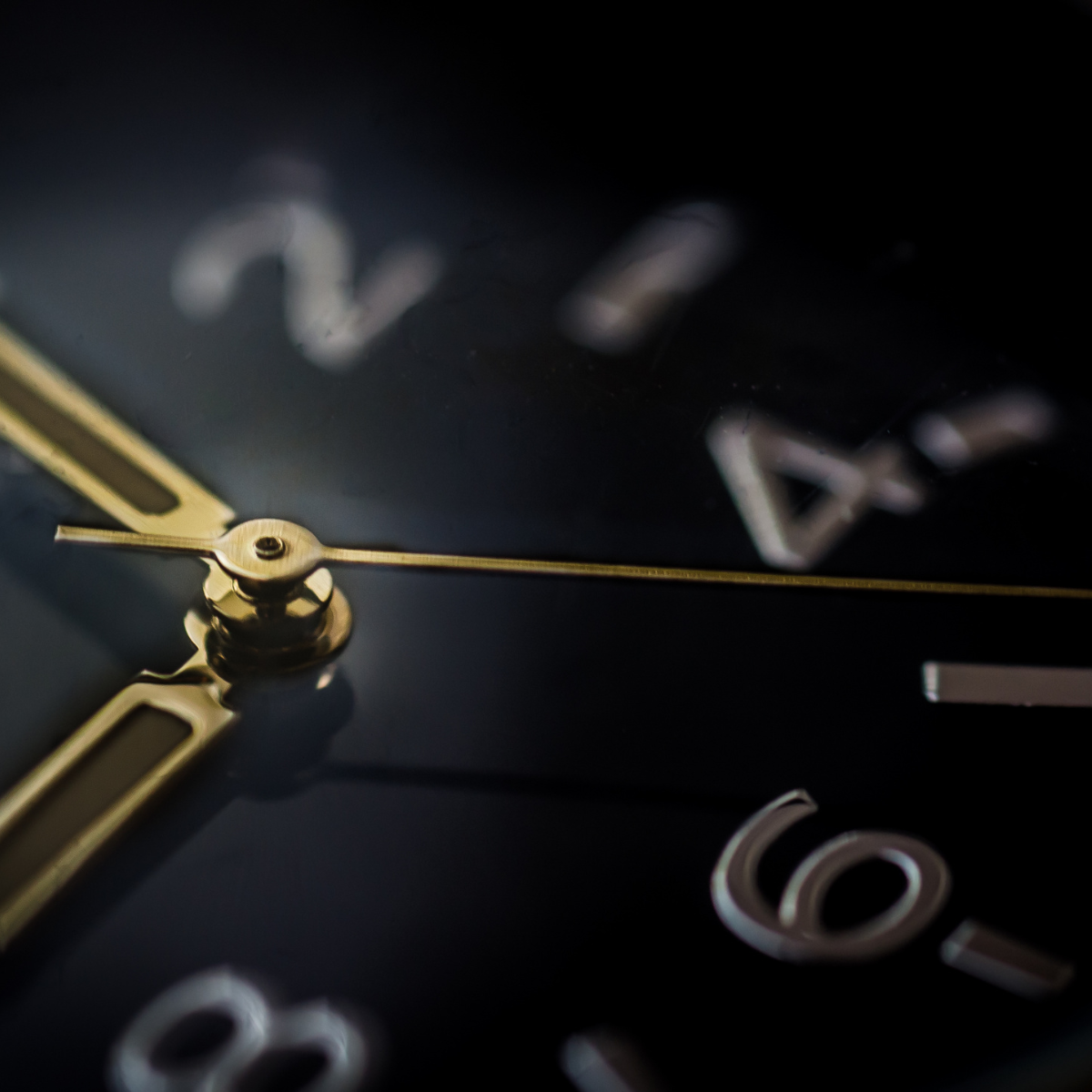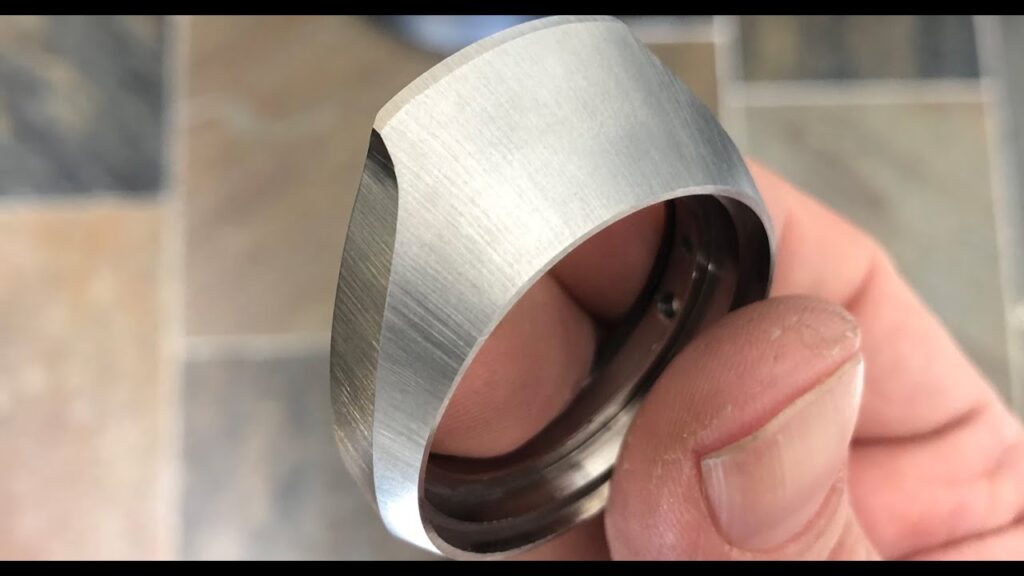
Are you a fan of vintage watches? If so, you’re in for a treat! In this article, we will be taking a closer look at the process of restoring an Omega Speedmaster Mark III. This iconic timepiece holds a special place in the hearts of watch enthusiasts all around the world, and today, we’ll be delving into the meticulous restoration process it undergoes. Get ready to discover the secrets behind bringing an Omega Speedmaster Mark III back to its former glory.
The restoration process of the Omega Speedmaster Mark III involves a technique called case restoration lapping. This intricate procedure is a crucial step in reviving the watch’s original shine and luster. In a mesmerizing video created by Vintwatches, we get an up-close and personal view of the restoration process, showcasing the expertise and precision required to breathe new life into this masterpiece. So, grab a comfortable seat and prepare to be amazed as you witness the transformation of an Omega Speedmaster Mark III right before your eyes.

Click Here To Read About Seiko Watches and Rolex Watches!
Introduction
Welcome to this comprehensive guide on restoring the Omega Speedmaster Mark III! If you’re an avid watch collector or simply have a passion for horology, the Omega Speedmaster Mark III holds a special place in your heart. With its rich history, iconic features, and timeless design, it’s no wonder this timepiece is highly sought after in the world of vintage watches.
In this article, we will walk you through the process of researching, assessing, and restoring the Omega Speedmaster Mark III. Whether you’ve stumbled upon a neglected vintage piece or are looking to revive your own Mark III, we’ve got you covered. So grab your favorite cup of coffee, sit back, and let’s dive into the wonderful world of the Omega Speedmaster Mark III.
Researching the Omega Speedmaster Mark III
Understanding the History
Before embarking on any restoration journey, it’s essential to understand the historical significance of the watch you’re about to work on. The Omega Speedmaster Mark III was introduced in 1971 as a successor to the popular Mark II. It was part of Omega’s Speedmaster Professional line, famously worn by astronauts during the Apollo missions.
Identifying Different Versions
In your research, you’ll come across different versions of the Mark III. Initially, it was available in stainless steel or gold-plated variants. The watch featured a distinctive barrel-shaped case with integrated bracelet. Over the years, variations in dial designs and color schemes were introduced, adding to the allure of this iconic timepiece.
Learning about the Iconic Features
One of the standout features of the Omega Speedmaster Mark III is its chronograph function. Equipped with a tachymeter scale, it allows you to measure speed. The watch also features a day-date complication, with the date displayed at the 3 o’clock position. Understanding these iconic features will help you appreciate the intricacies of the watch and guide you in the restoration process.
Click Here To See More Luxury Watches.
Initial Assessment of the Watch
Examining the Overall Condition
Once you’ve acquired a Mark III or decided to restore your own, start by examining its overall condition. Look for any visible signs of wear, damage, or rust. Note any scratches, dents, or discoloration on the case. Check the crystal, dial, and hands for flaws or cracks. This initial assessment will give you a clear idea of the extent of restoration required.
Identifying the Areas of Restoration Needed
Based on your examination, make a list of areas that require restoration. This could involve polishing the case, refurbishing the dial, replacing the hands, or servicing the movement. Take note of any specialized tools or expertise you may need to acquire for specific tasks.
Determining the Feasibility of Restoration
Before proceeding with the restoration, assess whether it is economically feasible and within your skillset. Some watches may have extensive damage or require rare parts, making the restoration process costly and time-consuming. If you’re unsure about certain aspects, it’s always wise to consult with a professional watchmaker who specializes in vintage timepieces.
Disassembling and Cleaning the Watch
Gathering the Necessary Tools
Before you start disassembling the watch, gather all the necessary tools required for the restoration process. These may include a case opener, case knife, case holder, movement holder, cleaning solutions, and various sized screwdrivers. Having the right tools for the job will ensure a smooth and efficient restoration process.
Removing the Bracelet and Strap
Begin by removing the bracelet or strap from the watch. This can usually be done by using a spring bar tool to compress the spring bars and detach them from the lugs. Take care not to scratch or damage the case during this process. Once the bracelet or strap is removed, set it aside for cleaning or replacement if necessary.
Taking Apart the Case and Movement
Now it’s time to disassemble the case and movement. Use the appropriate tools to carefully unscrew the case back, remove the crystal, and take out the movement. Take note of the order in which you remove the components to ensure easy reassembly later. Place each part in a separate container or watch parts tray for cleaning and organization.
Thoroughly Cleaning the Components
Cleaning the components is a critical step in the restoration process. Use specialized cleaning solutions and ultrasonic cleaners to remove dirt, dust, and old lubricants from each part. Take extra care when cleaning delicate components, such as the dial and hands, to avoid causing any damage. Once cleaned, make sure to thoroughly dry each part before moving on to the next step.

Restoring the Case
Evaluating the Case Material
During the restoration process, carefully evaluate the case material. If it’s stainless steel, you might be able to remove scratches and dents through polishing. However, if the case is made of gold-plated material, be cautious not to strip off the plating during the restoration process. Ideally, consult with a professional watchmaker to determine the best course of action.
Removing Scratches and Dents
To remove scratches and dents from the case, start by using a suitable abrasive material, such as a polishing cloth or micro-abrasive paste. Apply gentle pressure and make controlled circular motions to buff out the imperfections. Take your time during this process, ensuring you don’t remove excess material or alter the case shape.
Polishing the Case
Once the scratches and dents are removed, you can proceed to polish the case. Use a dedicated metal polish or polishing compound to restore the shine and luster of the case. Apply the polish with a soft cloth and work in small, circular motions. Take care not to over-polish and affect the original finishes of the case.
Refinishing the Bezel and Crown
If the bezel and crown have lost their original finish or show signs of wear, consider refinishing them. This involves carefully removing the old coating or damaged material and applying a new layer of plating or coating. Again, consult with a professional to ensure the refinishing process is done correctly and matches the original aesthetics of the watch.
Resolving Issues with the Dial and Hands
Inspecting the Dial for Flaws or Damage
Inspect the dial under proper lighting for any flaws or damage. Look for discoloration, fading, or scratches on the dial surface. Pay attention to any signs of moisture damage or deterioration of the dial’s lume. Identifying these issues will guide you in determining whether the dial requires refurbishing or replacement.
Refurbishing or Replacing the Dial
Refurbishing the dial involves carefully cleaning and restoring its original appearance. This process requires delicacy, as any aggressive cleaning techniques can irreversibly damage the dial. If the dial is beyond repair, you may need to consider replacing it. Finding an authentic replacement dial can be challenging, so ensure you source it from a reputable supplier.
Repairing or Replacing the Hands
Similar to the dial, inspect the hands for any damage or deterioration. If the hands have lost their original shape or lume, you may need to repair or replace them. Hand replacement requires precision and expertise, as the hands must be aligned perfectly for accurate timekeeping. Again, consult with a professional watchmaker if you’re unsure about this aspect of the restoration.

Servicing the Movement
Understanding the Different Components
The movement is the heart of the watch and requires meticulous care during the restoration process. Take time to understand the different components that make up the movement, such as the balance wheel, escapement, gear train, and winding mechanism. This knowledge will assist you in disassembling and reassembling the movement correctly.
Disassembling the Movement
Disassembling the movement can be intricate and time-consuming. Carefully follow the manufacturer’s instructions or consult a watchmaking guide specific to the Omega Speedmaster Mark III. Take note of each step and ensure you keep the individual components organized and labeled for easy reassembly.
Cleaning and Lubricating the Parts
Once the movement is disassembled, it’s time to clean and lubricate the parts. Use specially formulated cleaning solutions and ultrasonic cleaners to remove any dirt, dried oils, or debris from the components. After cleaning, apply the appropriate lubricants to the gears and pivots, ensuring smooth operation and reduced wear.
Reassembling the Movement
Reassembling the movement is a delicate task that requires utmost precision. Refer to your documentation or watchmaking guide to ensure the correct placement and assembly of each component. Take your time during this process, as even the slightest misalignment or error can affect the movement’s functionality.
Testing and Fine-Tuning
Checking for Proper Timekeeping
Once the movement is reassembled, it’s crucial to check for proper timekeeping. Use a timegrapher or similar device to measure the accuracy of the watch. Adjust the balance wheel if necessary to achieve optimal timekeeping performance.
Checking the Functionality of Chronograph
The Omega Speedmaster Mark III is renowned for its chronograph function. After the restoration, test the chronograph mechanism to ensure all functions, including start, stop, and reset, work smoothly and accurately. Make any adjustments if required to achieve optimal functionality.
Ensuring Water Resistance
If your Mark III is designed to be water-resistant, it’s important to test its water resistance after the restoration. Consult the watch’s specifications or refer to Omega’s guidelines to determine the appropriate water resistance testing method. This step ensures the watch can withstand normal wear and tear without compromising its internal components.
Adjusting the Movement for Accuracy
Fine-tuning the movement for accuracy is the final step in the restoration process. Utilize a timegrapher or other accurate timekeeping device to make any necessary adjustments. This may involve altering the balance wheel’s timing, adjusting the regulator, or tweaking the movement’s beat rate. Achieving optimal accuracy will ensure your Mark III performs as intended.

Replacing the Crystal and Gaskets
Removing the Old Crystal and Gaskets
If the crystal is scratched, cracked, or damaged, it’s advisable to replace it during the restoration process. Carefully remove the old crystal using the appropriate crystal lift or press. Take note of any rubber gaskets or seals that need replacement, as these play a crucial role in maintaining the watch’s water resistance.
Selecting a Suitable Replacement
When selecting a new crystal, ensure it matches the original specifications and dimensions of the watch. Consult with a watchmaker or supplier who specializes in vintage Omega parts to obtain an authentic replacement. For the gaskets, choose high-quality replacements that are compatible with your Mark III’s model and year.
Installing the New Crystal and Gaskets
With the new crystal and gaskets in hand, carefully install them in the case. Use a crystal press or appropriate tool to ensure a secure fit, avoiding excessive pressure that could damage the crystal or case. Double-check the gaskets to ensure they are correctly seated and provide adequate water resistance.
Conclusion
Congratulations on completing the restoration of your Omega Speedmaster Mark III! Through diligent research, careful assessment, and meticulous restoration work, you’ve revived a piece of horological history. The Omega Speedmaster Mark III holds a special place among collectors and enthusiasts, representing a time when precision, style, and functionality converged.
Remember, the restoration process requires patience, attention to detail, and a passion for preserving the authenticity and beauty of the watch. If you find yourself facing challenges or uncertain about certain aspects, don’t hesitate to reach out to experts or professional watchmakers. With their guidance and your dedication, your Omega Speedmaster Mark III will continue to captivate watch lovers for generations to come. Now sit back, admire your restored masterpiece, and cherish the rich heritage of the Omega Speedmaster Mark III.
Is The Rolex Submariner Better – Click Here to Learn More!

